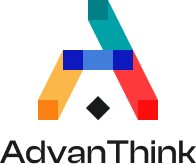Glossary
What if we spoke the same language?
Our experts offer you this non-exhaustive and evolving glossary

GlossZoom on artificial intelligence and datascience
AI offers companies limitless opportunities to improve processes, make more informed decisions and deliver exceptional customer experiences. Our AdvanThinkers offer this glossary to help you understand the concepts that will help you make the most of AI in an ever-changing world.
Artificial Intelligence (AI)
Technology that enables machines to simulate human cognitive abilities, such as learning, decision-making and problem-solving.
Computer vision
The ability of AI systems to interpret and analyze images and videos.
Process automation
Using AI to automate repetitive and manual tasks, improving efficiency and productivity.
Supervised learning
A type of machine learning where the model is trained on a set of labeled data to predict future results.
Enhanced learning
A type of learning where the model learns by trial and error, maximizing rewards and minimizing penalties.
Data morphing
A technology invented by AdvantThink, used in artificial intelligence and data science to analyze and visually transform any volume of data, in real time and without programming. Like image morphing, Data Morphing enables successive transformation of data, with constant access to the results of all intermediate stages.
Natural Language Processing (NLP)
The ability of machines to understand, interpret and generate human language.
Chatbot
An AI program that uses NLP to dialogue with users and answer their questions.
Artificial neural network
An approach to AI inspired by the workings of the human brain, used in Machine Learning.
Unsupervised learning
A type of machine learning where the model explores the data to identify patterns without prior labels.
Brain-Computer Interface (BCI)
A technology that enables machines to communicate directly with the human brain to control devices.
Discover the uses cases that integrate these concepts

GlossZoom on Payment Fraud
Fighting payment fraud with AI is an essential approach to protecting businesses and consumers against growing threats. These key terms are essential to understanding and implementing effective fraud prevention and detection measures.
Payment fraud
Payment fraud refers to any fraudulent activity aimed at carrying out unauthorized, deceptive or illegitimate transactions, causing financial losses to businesses and consumers.
Fraud detection algorithm
A fraud detection algorithm is a set of AI rules and models specifically designed to analyze transactions and identify suspicious or fraudulent behavior.
Data analysis
Data analysis involves examining and interpreting information from transactions to identify potential fraud patterns and take appropriate preventive measures.
Biometric authentication
Biometric authentication uses unique physical or behavioral characteristics, such as fingerprints, facial or voice recognition, to verify a user's identity when validating payments.
Behavioral analysis
Behavioral analysis monitors a user's usage habits and behavior patterns to detect any abnormal activity that might indicate fraud.
Collective intelligence
Collective intelligence refers to the use of AI to combine data and information from multiple sources to improve the detection and prevention of payment fraud.
Risk score
The risk score assigns a numerical value to each transaction, indicating the associated level of fraud risk. High-risk transactions may be subject to additional verification.
Artificial Intelligence (AI) for fraud prevention
Artificial Intelligence is a technology that enables machines to mimic human cognitive abilities, such as decision-making, learning, pattern recognition, and many others, to help detect and prevent payment fraud.
Machine Learning
Machine learning is a branch of AI that enables systems to improve automatically through experience and without being explicitly programmed. This enables fraud detection algorithms to adapt to new threats and improve their accuracy over time.
Predictive modeling
Predictive modeling uses statistical techniques and AI models to anticipate future behavior based on historical data, helping to predict fraud attempts and counter them effectively.
Two-factor verification (2FA)
Two-factor verification involves the use of two separate methods to authenticate a user, such as a password and a code sent to a cell phone, thus enhancing transaction security.
Black list
A blacklist is a database containing information on accounts, credit cards or addresses associated with fraudulent activities, enabling transactions from suspicious sources to be blocked.
Discover the uses cases that integrate these concepts
Come up with new concepts!
Your expertise counts! Submit new concepts to expand our glossary and share your knowledge with the AdvanThink community.














